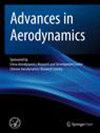Extension of the KDO turbulence/transition model to account for roughness
IF 2.3
3区 工程技术
Q2 ENGINEERING, MECHANICAL
引用次数: 2
Abstract
Wall roughness significantly influences both laminar-turbulent transition process and fully developed turbulence. A wall roughness extension for the KDO turbulence/transition model is developed. The roughness effect is introduced via the modification of the k and ν t boundary conditions. The wall is considered to be lifted to a higher position. The difference between the original position and the higher position, named as equivalent roughness height, is linked to the actual roughness height. The ratio between the two heights is determined by reasoning. With such a roughness extension, the predictions of the KDO RANS model agree well with the measurements of turbulent boundary layer with a sand grain surface, while the KDO transition model yields accurate cross-flow transition predictions of flow past a 6:1 spheroid.KDO湍流/过渡模式的扩展以考虑粗糙度
壁面粗糙度对层流-湍流过渡过程和充分发展的湍流都有显著影响。建立了KDO湍流/过渡模型的壁面粗糙度扩展。通过对k和ν t边界条件的修改,引入了粗糙度效应。墙被认为被提升到更高的位置。原始位置与较高位置之间的差称为等效粗糙度高度,与实际粗糙度高度相关联。两个高度之间的比例是由推理决定的。在这样的粗糙度扩展下,KDO RANS模型的预测结果与具有砂粒表面的湍流边界层的测量结果吻合良好,而KDO过渡模型对流过6:1椭球面的流动进行了准确的横流过渡预测。
本文章由计算机程序翻译,如有差异,请以英文原文为准。
求助全文
约1分钟内获得全文
求助全文

 求助内容:
求助内容: 应助结果提醒方式:
应助结果提醒方式:


